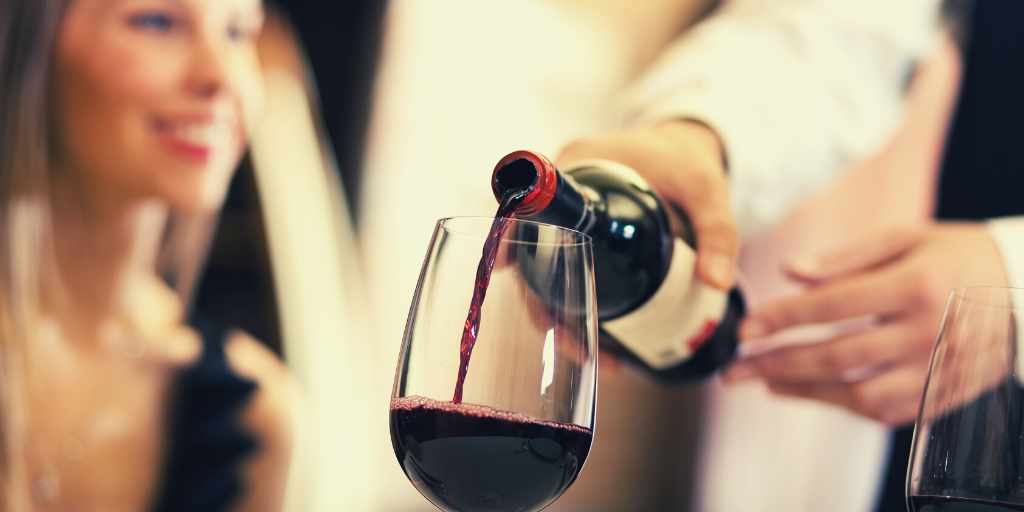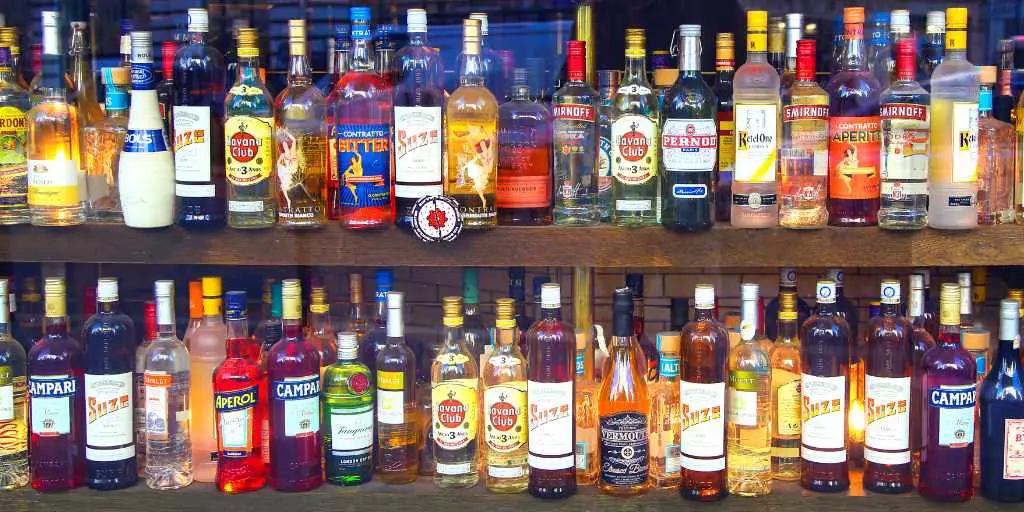If you’ve never heard of a sommelier or have ambitions to be someday one as an occasional host or even a bartender, you have to know how to present wine to guests properly. It’s not just about who is visiting your house either. Every consumer at a restaurant is a guest as well.
Presenting wine is a matter of temperature, timing, presentation, pouring, and positioning. Most aspects of wine presentation are about key positioning (such as where you are standing and even how you enter the room) and less about random factors.
If you’ve ever watched a movie set in the 1800s, especially in Britain, there is always a butler who presents the food—with staff, of course—and the wine. It should give you an idea of how this works. Downton Abbey would be another example of the vibe and aesthetic we aim for.
It Starts with the Temperature
You don’t want to serve wine at the wrong temperature, especially if it’s a tad on the warm side. Depending on the wine in question, wine should be presented at a very specific temperature.
- Sparkling Wine or Champagne: 42°F to 46°F
- Red Wine: 48°F to 53°F
- White Wine: 46°F to 53°F
- Rosé: 48°F to 53°F
If you are serving wine from home, the average home refrigerator chills food and beverages to around 37°F. That will be a little on the cold side but it shouldn’t take long to reach the right temperature.
Make sure that there is no condensation on the outside of the bottle. If you have a separate, refrigerated area for wines and other alcohol, you should control the temperature to the best of your ability.
Let it Breathe
When you hear the term “breathing,” it doesn’t mean the wine is alive and breathing in. When wine is exposed to the air, once you remove the cork, chemical reactions begin to take place immediately. This is the part that is referenced when using the term “breathing.”
Another more applicable term would be “aerating.” As soon as you pull the cork, the breathing phase begins. That’s why timing is important. When you first open the wine bottle, only the small surface section is exposed to the air.
You can purchase a decanter to upgrade the breathing process or go ahead and pour essentially. If you are presenting the wine, go ahead and pour. The wine’s surface has more contact with the air when it’s in the glass. Swirling the wine in the glass expedites breathing as well.
If you haven’t used a decanter before, we’ve got an article on how to clean and dry a decanter here.
Timing
The breathing process is all about timing as well. Any wine expert will tell you that despite popular beliefs and opinions out there, just removing the cork doesn’t make much of a change in the taste of the wine because there is such a tiny surface area of the wine touching the air.
When you pull the cork, you can either finish presenting the wine and pour it into glasses or use the decanter.
Presenting the Wine
The presentation itself is the most important and visible part of a wine presentation. When guests sit at the table, food is usually brought to them and presented on their left. However, wine is presented on their right—always on their right. There are also some wine superstitions you might want to be aware of, depending on your guests!
Everything, at this point, is about details. For instance, when you present the wine, it’s always on the right of the host (you start where the host is sitting), and the label of the wine has to face the host. So the wine label will be pointing to your left and to the right side of the host.
You also have to present the wine verbally. The wine bottle should be closed at this point. Tell the host the year, winery, and type of wine. The host will give you permission to remove the cork and open the bottle.
Once the host gives his or her approval, you work your way around the table in a clockwise manner, serving all of the women first. Then you will make your way around the table again, serving the men.
Make sure that you pour the host’s wine first. The amount of wine you should pour into the host’s glass is 30ml. It’s a specific amount, and you may have to practice pouring 30ml out for a while before you get the hang of it.
Once the glasses have been filled, return to the host and set the wine next to them, label facing them. You should also set an ice bucket on the table in case the wine is chilled. The host has the option to keep it on ice or not.
Once all is said and done, you have to stand by, remain in the room, keep your eyes on the wine glasses, and pour whenever a guest calls for it or their wine looks low.
Additional Tips for Presenting Wine
To be a successful sommelier is a lot like being a bartender, without all the hurry-up chaos that a bartender endures. You have to know your wine through and through. You also have to be sociable and well-spoken.
You also need to understand at least the basics of matching wine with food, known as wine pairing. If the host and guests have a specific meal, you need to know what wine matches that particular meal.
For instance, red wine goes well with meats, while white wine goes well with seafood and salads. Of course, wine tastes are different for everyone, and the host or the guest may want to buck certain trends. That’s why it’s always important to check with the host beforehand.
This article covers some basic wine knowledge for servers.
Can You Take Sommelier Classes?
A sommelier doesn’t just serve wine at dinners. They also recommend a wine to restaurants and a variety of customer types. You will also learn just about everything there is to know about wine. Fortunately, there are classes for sommeliers since it’s a specialized sort of career path.
Like bartending, being a sommelier is all about service. Sommeliers belong to the hospitality industry, and you will have to spend a lot of time working in the restaurant industry and taking classes before you are good enough to step up to the next level.
You don’t have to obtain a college degree to become a sommelier; if you know the right people, you may not even have to take classes. If you do decide to take the path of education, there are numerous classes, both in person and on the web.
There are four different certification levels for sommeliers:
- Introductory
- Certified Sommelier
- Advanced Sommelier
- Master Sommelier
To become a master sommelier, you will have to take the master’s exam, which covers everything you will have learned up until this point, including blind tasting the wines and identifying them, along with actually performing a wine service like you would in real life.
All Things Considered
Serving wine is a touchy process for detail-oriented individuals more than anyone else. While most take the education path to become sommeliers, you certainly don’t have to, although it will take much longer and involve a great deal of experience in the hospitality industry.





